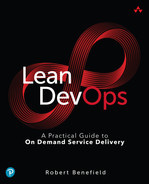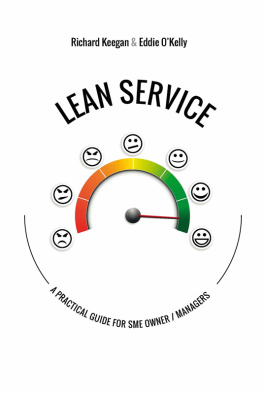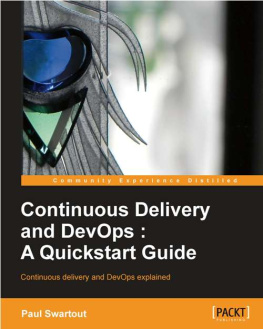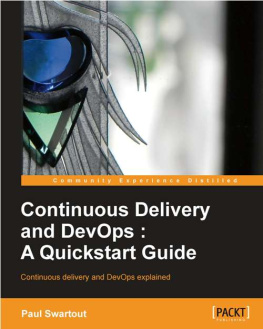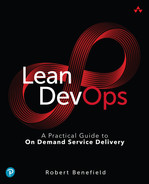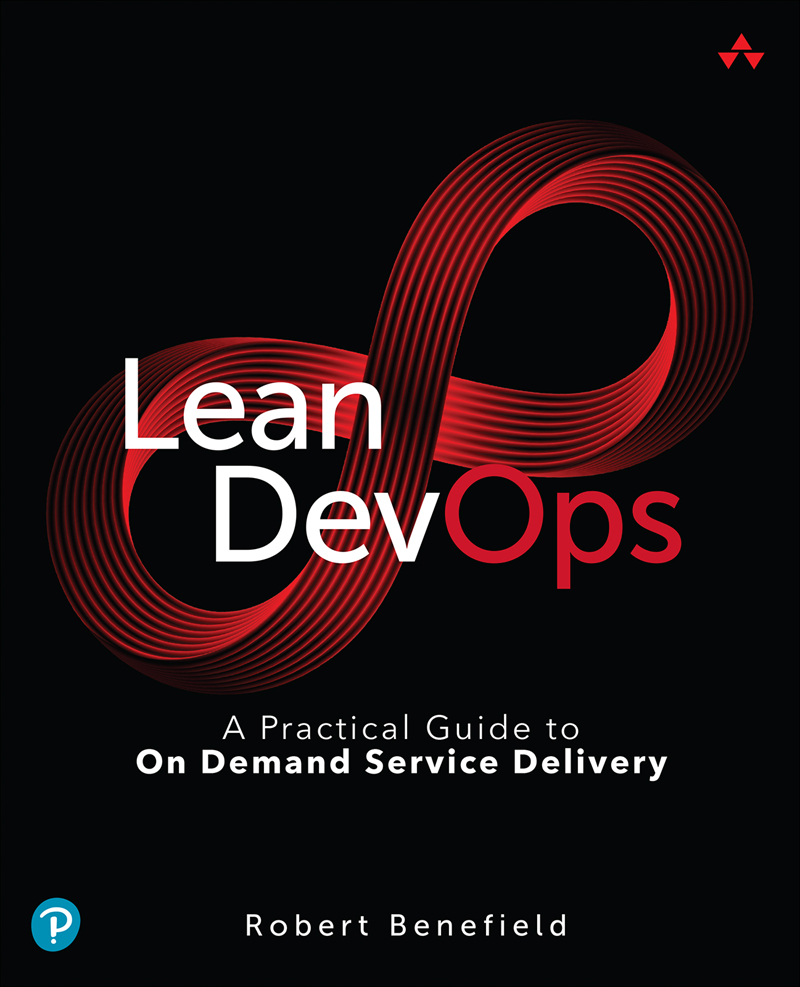ePUB is an open, industry-standard format for eBooks. However, support of ePUB and its many features varies across reading devices and applications. Use your device or app settings to customize the presentation to your liking. Settings that you can customize often include font, font size, single or double column, landscape or portrait mode, and figures that you can click or tap to enlarge. For additional information about the settings and features on your reading device or app, visit the device manufacturers Web site.
Many titles include programming code or configuration examples. To optimize the presentation of these elements, view the eBook in single-column, landscape mode and adjust the font size to the smallest setting. In addition to presenting code and configurations in the reflowable text format, we have included images of the code that mimic the presentation found in the print book; therefore, where the reflowable format may compromise the presentation of the code listing, you will see a Click here to view code image link. Click the link to view the print-fidelity code image. To return to the previous page viewed, click the Back button on your device or app.
Lean DevOps
A Practical Guide to On Demand Service Delivery
Robert Benefield

Boston Columbus New York San Francisco Amsterdam Cape Town
Dubai London Madrid Milan Munich Paris Montreal Toronto Delhi
Mexico City So Paulo Sydney Hong Kong Seoul Singapore Taipei Tokyo
Many of the designations used by manufacturers and sellers to distinguish their products are claimed as trademarks. Where those designations appear in this book, and the publisher was aware of a trademark claim, the designations have been printed with initial capital letters or in all capitals.
The author and publisher have taken care in the preparation of this book, but make no expressed or implied warranty of any kind and assume no responsibility for errors or omissions. No liability is assumed for incidental or consequential damages in connection with or arising out of the use of the information or programs contained herein.
For information about buying this title in bulk quantities, or for special sales opportunities (which may include electronic versions; custom cover designs; and content particular to your business, training goals, marketing focus, or branding interests), please contact our corporate sales department at or (800) 382-3419.
For government sales inquiries, please contact .
For questions about sales outside the U.S., please contact .
Visit us on the Web: informit.com/aw
Library of Congress Control Number: 2022937306
Copyright 2023 Pearson Education, Inc.
Cover image: Vinap/Shutterstock
All rights reserved. This publication is protected by copyright, and permission must be obtained from the publisher prior to any prohibited reproduction, storage in a retrieval system, or transmission in any form or by any means, electronic, mechanical, photocopying, recording, or likewise. For information regarding permissions, request forms and the appropriate contacts within the Pearson Education Global Rights & Permissions Department, please visit www.pearson.com/permissions.
ISBN-13: 978-0-13-384750-5
ISBN-10: 0-13-384750-0
ScoutAutomatedPrintCode
Author: To my beautiful love, Gabrielle, my little people Aidan and Talia, and all of those who have enriched my life and, in the process, made the world a better place.
Foreword
Just about everyone can remember being inconvenienced by a computer outage at sometime during their lives. I particularly remember walking into the Melbourne airport on a sunny Saturday morning and discovering that the computer which ran all the check-in terminals was down. It stayed down all morning, exposing just how time-consuming and awkward the manual check-in process was. Some of us made it to our destinations many hours late; others were not so lucky. And I remember the hours-long check-in lines at the Baltimore airport many years later; the computer running Southwests check-in kiosks was out and this time there was no manual backup process. After multiple long lines, we raced to our gate just in time to board before the door closed on a half-empty plane.
As I stood in those lines, I imagined the scene in the data center where emergency responders were no doubt scrambling to bring the system back up; after all, I had been there. Some years ago, I managed a factory data center, and we knew that any outage longer than a half hour would seriously curtail pack-out. It only happened once, and believe me, that was one time too many.
At last, we have a book written for the people on the emergency response side of a computer outage. Its not a book focused on being agile or lean; its a book that focuses on being ready: ready to prevent serious service delivery problems, ready to limit the damage when they happen, and ready to uncover the cause of any incident and keep it from happening again. You would think, given our increasing reliance on technology, that there would be a lot of information about how to do these things well. But I havent seen a lot of guidance for those who hold this challenging job, at least until now.
We have decades, if not centuries, of experience handling emergency situations in fire departments, hospitals, and military organizations. But rarely have we thought to apply that experience to the technical world, probably because we dont consider a technical failure to be a matter of life or death. But as Robert demonstrates throughout this book, lessons from other domains can be surprisingly relevant for those seeking to prevent computer outages and, when they do (inevitably) occur, limit their damage and ensure a rapid, safe recovery.
Service delivery teams do a lot more than minimize outages and smoothly handle any that may arise; they provide a critical interface between their organization and its consumers. This book is based on a simple premisethe purpose of a technical system is to bring about expected outcomes for its consumers, and the purpose of service delivery teams is to ensure those expectations are met. They do this by understanding consumers intent when using the service, discovering what prevents consumers from achieving the outcomes they expect, and learning how to improve the system and close the gaps.
This book is not about meeting service delivery targets; its about paying attention: paying attention to consumers, being aware of their expectations, and being attentive to their frustrations. Its about paying attention to the ways in which complex technical systems interact, how information flows through organizations, and how decisions are made and executed. Its about paying attention to and improving the way work gets done and the outcomes that are delivered.
Be warned that focusing on delivering outcomes is a novel concept for IT teams, because historically, there was a large time and distance gap between technical teams and their consumers. Most standard IT practices, including Agile practices, presume that an intermediary translates consumer intent into proxy features and goals, which then guide the decisions of the technical team. This book eliminates such proxies, and in doing so, it may contradict some of your views on appropriate roles, responsibilities, and processes. Therefore, you might want to check your confirmation bias at the door as you enter, because, as the saying goes, It aint what you dont know that gets you into trouble. Its what you know for sure that just aint so.

